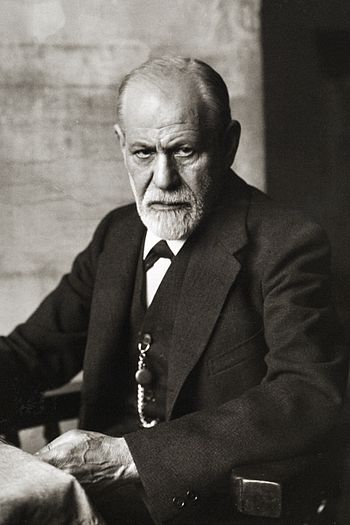‘Same-self marriage’: The pinnacle of the culture of narcissism
 |
| English: Sigmund Freud (Photo credit: Wikipedia) |
Since time immemorial, marriage has meant the union of a man and a woman for life, usually for the purpose of raising children. But today marriage tends to mean just about any relationship you can think of—first so-called same-sex marriage, now polyamory, or even polygamy are said to be just as valid. But it doesn’t stop there. So hold onto your cummerbund, because I’ve got a new one for you.
It’s known as sologamy—marrying oneself. Or as Dr. Timothy George of Beeson Divinity School called it in a recent First Things article, “same-self marriage.” Dr. George, of course, was a close colleague of Chuck Colson and the past president of the Colson Center’s Board of Directors.
Although sologamy isn’t a big trend yet (but then again, neither were other forms of “marriage”), Dr. George points to several notable examples. Author Sara Sharpe wrote about her self-marriage bliss in her book “A Dress, A Ring, Promises to Self.” Meanwhile, Nadine Schweigert, from Fargo, North Dakota, “married” herself in a public ceremony. Listen to her vows: “I, Nadine,” she said, “promise to enjoy inhabiting my own life and to relish a lifelong love affair with my beautiful self.” Now why would people do this?
Dr. George explains: “In some ways same-self marriage is the logical outgrowth of what cultural critic Christopher Lasch described in his 1979 bestseller “The Culture of Narcissism.” Lasch, building on Sigmund Freud’s classic essay ‘On Narcissism’ of 1916, applied the term to the sense of grandiosity and excessive self-love that seem to mark not only psychologically disordered individuals but post-sixties American society as a whole.”
Perhaps that’s why the word “selfie” is so revealing. We’re a nation of narcissists.
“Narcissism,” Dr. George goes on, “is more than modern rugged individualism gone to seed. At its heart it’s a spiritual disorder, what Martin Luther … and Augustine described as incurvatus in se, ‘twisted back into one’s self.’ In our own era, we have seen the evisceration of those communities that sustain us during the most trying and difficult times. Chief among these is the family.”
This form of incurvatus in se is a sign of the sin and brokenness of our world. It’s sin because we are our brother’s keeper. God created us to love others and live in community. That’s how we express and experience His love. So committing only to oneself is a form of brokenness.
Lasch said that the cure for this narcissism “appears to lie in a recognition of our need for and dependence on” other people. Or, as Jesus said, love your neighbor as yourself.
So how do we respond to our culture of narcissism? First, we need more compassion than sarcasm. This movement, if that’s what it is, is a poignant reminder that people have longings, but don’t know how to fulfill them. If they don’t fulfill those longings in God and His Word, they’ll search until they find something else that seems to work.
Second, we need to confess that far too often our own marriages have not been a great picture of the real thing, and so people are drawn to counterfeits. Perhaps if our marriages were closer to what God wants, our lost neighbors might want this for themselves. And remember, Scripture says our marriages are supposed to model Christ and the church. So let’s get our own homes in order.
Third, we need to lovingly share the good things we have in our marriage with others—otherwise, how will they be drawn to the real thing? Marriage can be a wonderful tool to share God’s love with a lost and hurting world. As Bonhoeffer said to a newly married couple, “In your love, you see only the heaven of your own happiness, but in marriage you are placed at a post of responsibility towards the world and mankind.”
Reprinted with permission from BreakPoint.


